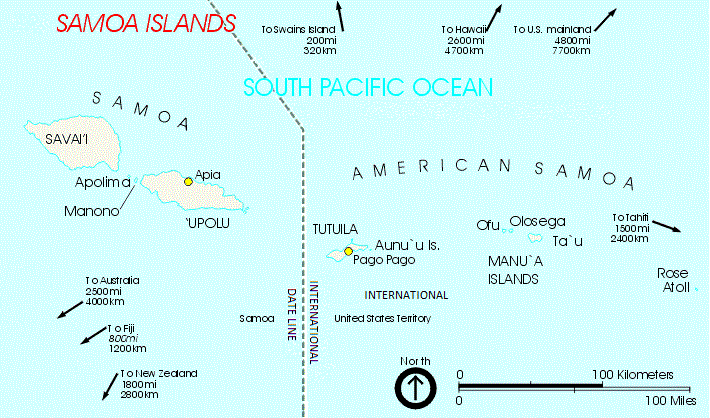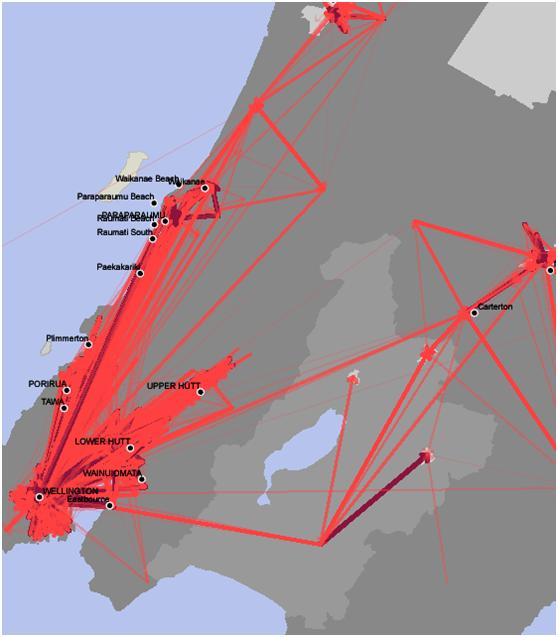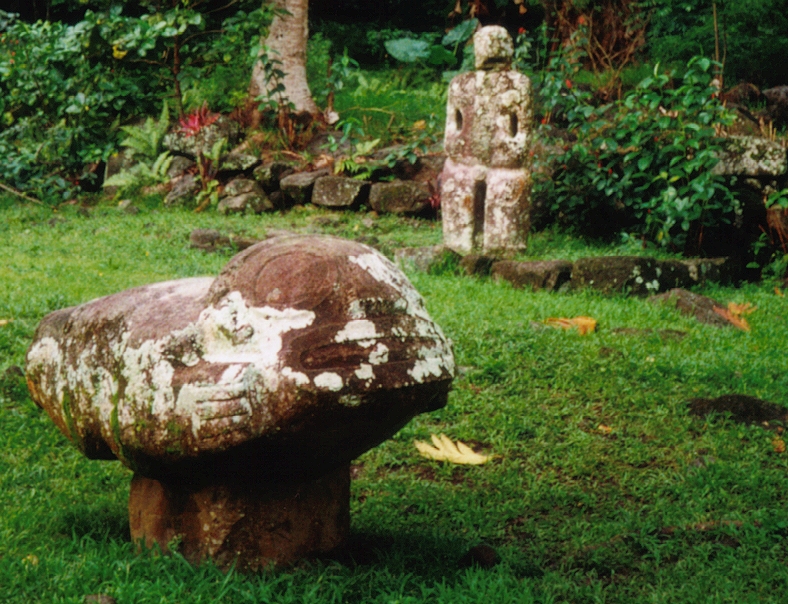|
Samoan Language
Samoan ( or ; ) is a Polynesian language spoken by Samoans of the Samoan Islands. Administratively, the islands are split between the sovereign country of Samoa and the United States territory of American Samoa. It is an official language, alongside English, in both jurisdictions. It is widely spoken across the Pacific region, heavily so in New Zealand and also in Australia and the United States. Among the Polynesian languages, Samoan is the most widely spoken by number of native speakers. Samoan is spoken by approximately 260,000 people in the archipelago and with many Samoans living in diaspora in a number of countries, the total number of speakers worldwide was estimated at 510,000 in 2015. It is the third-most widely spoken language in New Zealand, where 2.2% of the population, 101,900 people, were able to speak it as of 2018. The language is notable for the phonological differences between formal and informal speech as well as a ceremonial form used in Samoan oratory. Cla ... [...More Info...] [...Related Items...] OR: [Wikipedia] [Google] [Baidu] |
Samoan Islands
The Samoan Islands ( sm, Motu o Sāmoa) are an archipelago covering in the central South Pacific, forming part of Polynesia and of the wider region of Oceania. Administratively, the archipelago comprises all of the Independent State of Samoa and most of American Samoa (apart from Swains Island, which is geographically part of the Tokelau Islands). The land masses of the two Samoan jurisdictions are separated by of ocean at their closest points. The population of the Samoan Islands is approximately 250,000. The inhabitants have in common the Samoan language, a culture known as '' fa'a Samoa,'' and an indigenous form of governance called '' fa'amatai''. Samoans are one of the largest Polynesian populations in the world, and most are of exclusively Samoan ancestry. The oldest known evidence of human activity in the Samoan Islands dates to around 1050 BCE. It comes from a Lapita site at Mulifanua wharf on Upolu island. In 1768, the eastern islands were visited by the French ... [...More Info...] [...Related Items...] OR: [Wikipedia] [Google] [Baidu] |
Statistics New Zealand
Statistics New Zealand ( mi, Tatauranga Aotearoa), branded as Stats NZ, is the public service department of New Zealand charged with the collection of statistics related to the economy, population and society of New Zealand. To this end, Stats NZ produces censuses and surveys. Organisation Statistics New Zealand employs people with a variety of skills, including statisticians, mathematicians, computer science specialists, accountants, economists, demographers, sociologists, geographers, social psychologists, and marketers. There are seven organisational subgroups each managed by a Deputy Government Statistician: * Macro-economic and Environment Statistics studies prices, national accounts, develops macro-economic statistics, does government and international accounts, and ANZSIC 06 implementation (facilitating changeover to new classification code developed jointly with Australian statistics officials.) * Social and Population Statistics studies population, social conditions, ... [...More Info...] [...Related Items...] OR: [Wikipedia] [Google] [Baidu] |
Rapa Nui Language
Rapa Nui or Rapanui (, Rapa Nui: , Spanish: ), also known as Pascuan () or ''Pascuense'', is an Eastern Polynesian language of the Austronesian language family. It is spoken on the island of Rapa Nui, also known as ''Easter Island''. The island is home to a population of just under 6,000 and is a special territory of Chile. According to census data, there are 9,399 people (on both the island and the Chilean mainland) who identify as ethnically Rapa Nui. Census data does not exist on the primary known and spoken languages among these people. In 2008, the number of fluent speakers was reported as low as 800. Rapa Nui is a minority language and many of its adult speakers also speak Spanish. Most Rapa Nui children now grow up speaking Spanish and those who do learn Rapa Nui begin learning it later in life. History The Rapa Nui language is isolated within Eastern Polynesian, which also includes the Marquesic and Tahitic languages. Within Eastern Polynesian, it is closest to Mar ... [...More Info...] [...Related Items...] OR: [Wikipedia] [Google] [Baidu] |
Eastern Polynesian Languages
The Polynesian languages form a genealogical group of languages, itself part of the Oceanic branch of the Austronesian family. There are 38 Polynesian languages, representing 7 percent of the 522 Oceanic languages, and 3 percent of the Austronesian family. While half of them are spoken in geographical Polynesia (the Polynesian triangle), the other half – known as Polynesian outliers – are spoken in other parts of the Pacific: from Micronesia to atolls scattered in Papua New Guinea, the Solomon Islands or Vanuatu. The most prominent Polynesian languages, in number of speakers, are Tahitian, Samoan, Tongan, Māori and Hawaiian. The ancestors of modern Polynesians were Lapita navigators, who settled in the Tonga and Samoa areas about 3,000 years ago. Linguists and archaeologists estimate that this first population went through common development during about 1000 years, giving rise to Proto-Polynesian, the linguistic ancestor of all modern Polynesian languages. Af ... [...More Info...] [...Related Items...] OR: [Wikipedia] [Google] [Baidu] |
Tokelauan Language
Tokelauan is a Polynesian language spoken in Tokelau and on Swains Island (or Olohega) in American Samoa. It is closely related to Tuvaluan and is related to Samoan and other Polynesian languages. Tokelauan has a co-official status with English in Tokelau. There are approximately 4,260 speakers of Tokelauan, of whom 2,100 live in New Zealand, 1,400 in Tokelau, and 17 in Swains Island. "Tokelau" means "north-northeast". Loimata Iupati, Tokelau's resident Director of Education, has stated that he is in the process of translating the Bible from English into Tokelauan. While many Tokelau residents are multilingual, Tokelauan was the language of day-to-day affairs in Tokelau until at least the 1990s, and is spoken by 88% of Tokelauan residents. Of the 4600 people who speak the language, 1600 of them live in the three atolls of Tokelau – Atafu, Nukunonu and Fakaofo. Approximately 3000 people in New Zealand speak Tokelauan, and the rest of the known Tokelauan speakers are spread ac ... [...More Info...] [...Related Items...] OR: [Wikipedia] [Google] [Baidu] |
Polynesian Mythology
The Polynesian narrative or Polynesian mythology encompasses the oral traditions of the people of Polynesia (a grouping of Central and South Pacific Ocean island archipelagos in the Polynesian Triangle) together with those of the scattered cultures known as the Polynesian outliers. Polynesians speak languages that descend from a language reconstructed as Proto-Polynesian - probably spoken in the Tonga - Samoa area around 1000 BC. Description Prior to the 15th century AD, Polynesian peoples fanned out to the east, to the Cook Islands, and from there to other groups such as Tahiti and the Marquesas. Their descendants later discovered the islands from Tahiti to Rapa Nui, and later Hawai‘i and New Zealand. The latest research puts the settlement of New Zealand at about 1300 AD. The various Polynesian languages are all part of the Austronesian language family. Many are close enough in terms of vocabulary and grammar to permit communication between some other language speakers. ... [...More Info...] [...Related Items...] OR: [Wikipedia] [Google] [Baidu] |
Tapu (Polynesian Culture)
Tapu is a Polynesian traditional concept denoting something holy or sacred, with " spiritual restriction" or "implied prohibition"; it involves rules and prohibitions. The English word ''taboo'' derives from this later meaning and dates from Captain James Cook's visit to Tonga in 1777. The concept exists in many societies, including traditional Māori, Samoan, Kiribati, Rapanui, Tahitian, Hawaiian, and Tongan cultures, in most cases using a recognisably similar word (from Proto-Polynesian '' *tapu''), though the Rotuman term for this concept is "ha'a". In Hawaii, a similar concept is known as "kapu". Outside Polynesian The root also exists outside Polynesian languages, in the broader Austronesian family: e.g. Fijian ''tabu'', Hiw (Vanuatu) ''toq'' ‘holy, sacred’, Mwotlap ''ne-teq'' ‘cemetery’… François (2022). Whether Polynesian or not, all modern forms go back to a Proto-Oceanic etymon reconstructed as *''tabu'' . As for cognates outside Oceanic, they seem to ... [...More Info...] [...Related Items...] OR: [Wikipedia] [Google] [Baidu] |
Atua
Atua are the gods and spirits of the Polynesian peoples such as the Māori mythology, Māori or the Hawaiian religion, Hawaiians (see also ); the Polynesian languages, Polynesian word literally means "power" or "strength" and so the concept is similar to that of ''mana''. Today, it is also used for the monotheistic conception of God. Especially powerful atua included: * ''Rongo, Rongo-mā-Tāne'' – god of agriculture and peace * ''Tāne, Tāne Mahuta'' – creator of all living things such as animals, birds and trees * ''Tangaroa'' – god of the sea * ''Tūmatauenga'' – a god of war * ''Whiro'' – god of darkness and evil In Samoa, where means "god" in the Samoan language, traditional pe'a, tattooing was based on the doctrine of tutelary spirits. There is also a district on the island of Upolu in Samoa called Atua (district), Atua. Atua or gods were also the center of Māori mythology, Māori religion. In Māori mythology, Māori's belief, there was no such word as "reli ... [...More Info...] [...Related Items...] OR: [Wikipedia] [Google] [Baidu] |
Samoa 'ava Ceremony
Samoa, officially the Independent State of Samoa; sm, Sāmoa, and until 1997 known as Western Samoa, is a Polynesian island country consisting of two main islands ( Savai'i and Upolu); two smaller, inhabited islands ( Manono and Apolima); and several smaller, uninhabited islands, including the Aleipata Islands ( Nu'utele, Nu'ulua, Fanuatapu and Namua). Samoa is located west of American Samoa, northeast of Tonga (closest foreign country), northeast of Fiji, east of Wallis and Futuna, southeast of Tuvalu, south of Tokelau, southwest of Hawaii, and northwest of Niue. The capital city is Apia. The Lapita people discovered and settled the Samoan Islands around 3,500 years ago. They developed a Samoan language and Samoan cultural identity. Samoa is a unitary parliamentary democracy with 11 administrative divisions. It is a sovereign state and a member of the Commonwealth of Nations. Western Samoa was admitted to the United Nations on 15 December 1976. Because of the Sam ... [...More Info...] [...Related Items...] OR: [Wikipedia] [Google] [Baidu] |
Aliʻi
The aliʻi were the traditional nobility of the Hawaiian islands. They were part of a hereditary line of rulers, the ''noho aliʻi''. The word ''aliʻi'' has a similar meaning in the Samoan language and other Polynesian languages, and in Māori it is pronounced "ariki". Background In ancient Hawaiian society, the ''aliʻi'' were hereditary nobles (a social class or caste). The ''aliʻi'' consisted of the higher and lesser chiefs of the various levels on the islands. The ''noho aliʻi'' were the ruling chiefs. The ''aliʻi'' were believed to be descended from the deities. There were eleven classes of ''aliʻi'', of both men and women. These included the ''kahuna'' (priestesses and priests, experts, craftsmen, and canoe makers) as part of four professions practiced by the nobility. Each island had its own aliʻi nui, who governed their individual systems. ''Aliʻi'' continued to play a role in the governance of the Hawaiian islands until 1893, when Queen Liliʻuokalani was overt ... [...More Info...] [...Related Items...] OR: [Wikipedia] [Google] [Baidu] |
Cognate
In historical linguistics, cognates or lexical cognates are sets of words in different languages that have been inherited in direct descent from an etymology, etymological ancestor in a proto-language, common parent language. Because language change can have radical effects on both the sound and the meaning of a word, cognates may not be obvious, and often it takes rigorous study of historical sources and the application of the comparative method to establish whether lexemes are cognate or not. Cognates are distinguished from Loanword, loanwords, where a word has been borrowed from another language. The term ''cognate'' derives from the Latin noun '':wikt:cognatus, cognatus blood relative'. Characteristics Cognates need not have the same meaning, which semantic drift, may have changed as the languages developed independently. For example English language, English ''wikt:starve#English, starve'' and Dutch language, Dutch ''wikt:sterven#Dutch, sterven'' 'to die' or German languag ... [...More Info...] [...Related Items...] OR: [Wikipedia] [Google] [Baidu] |




